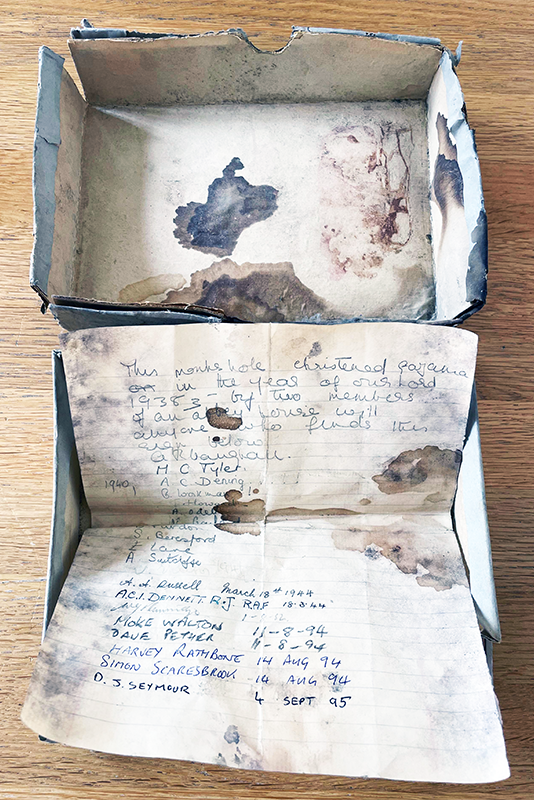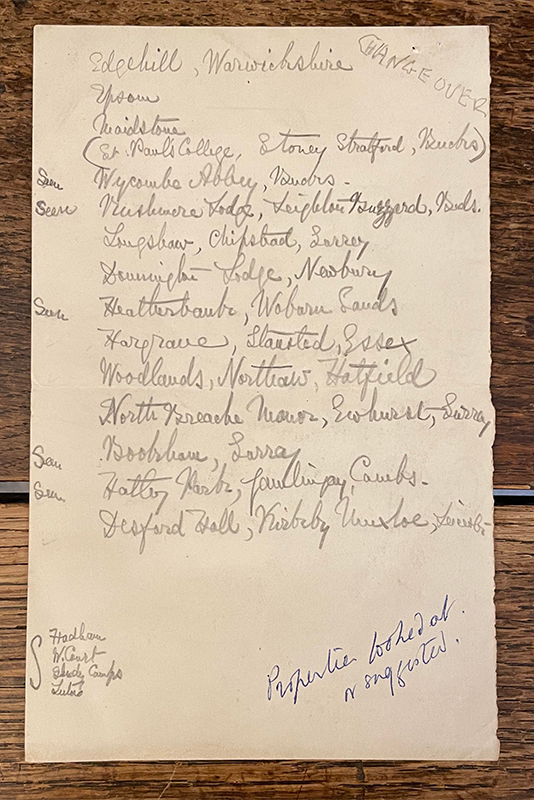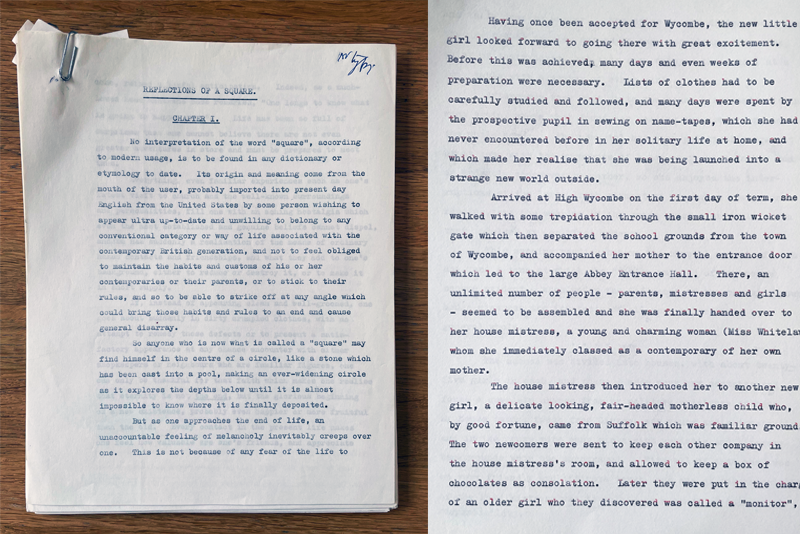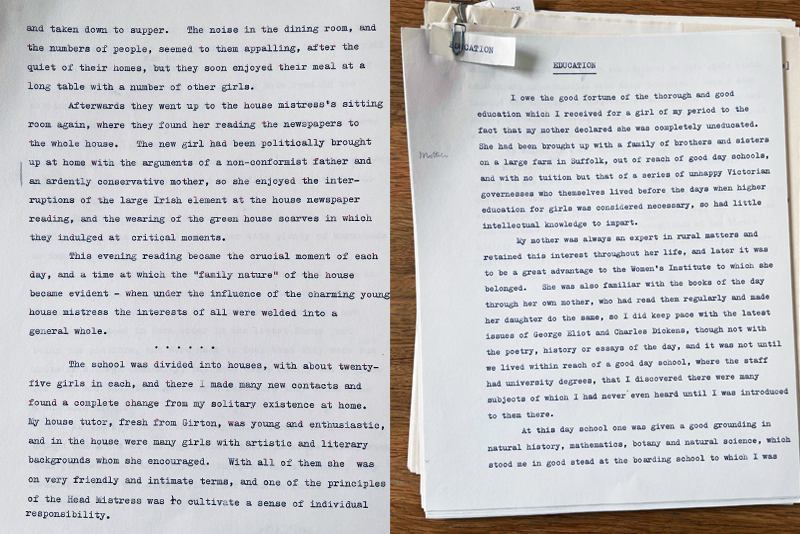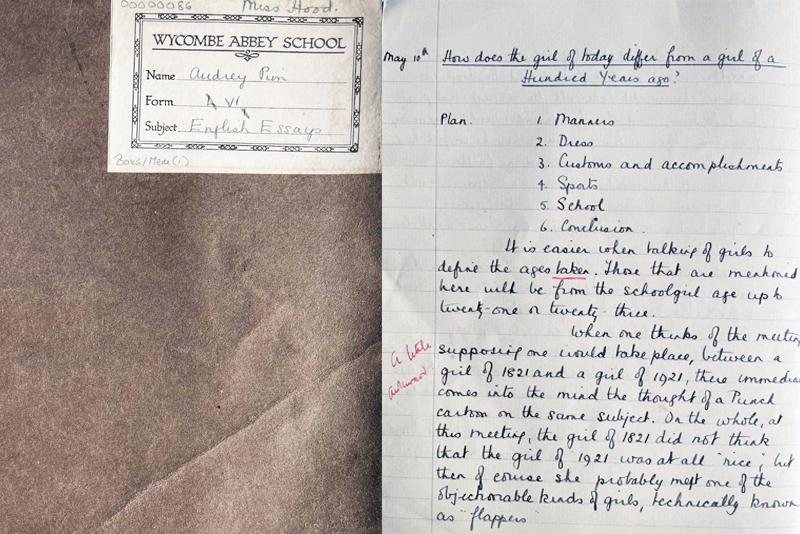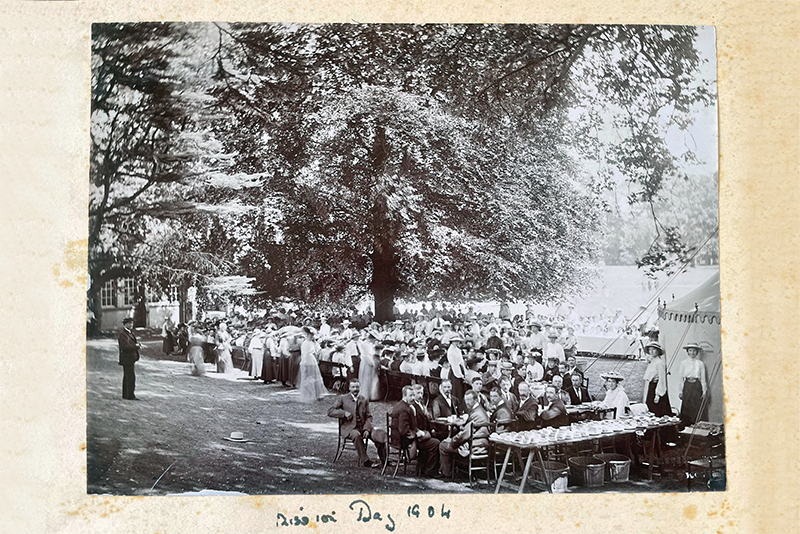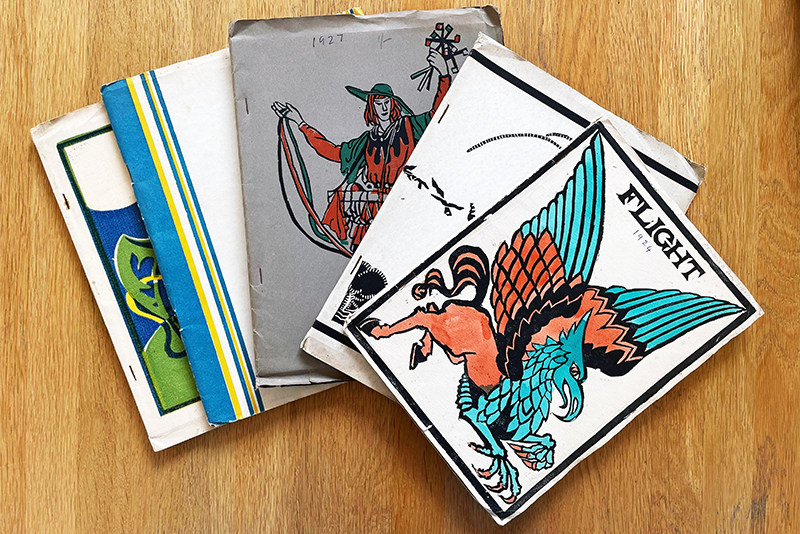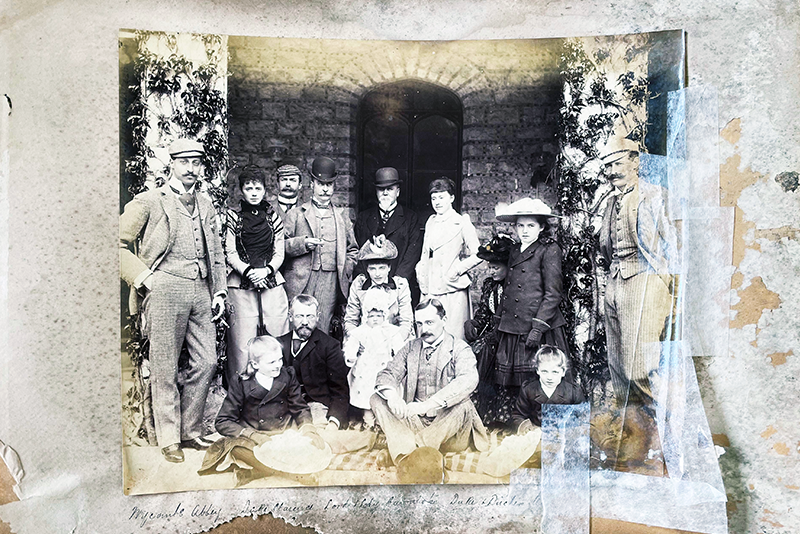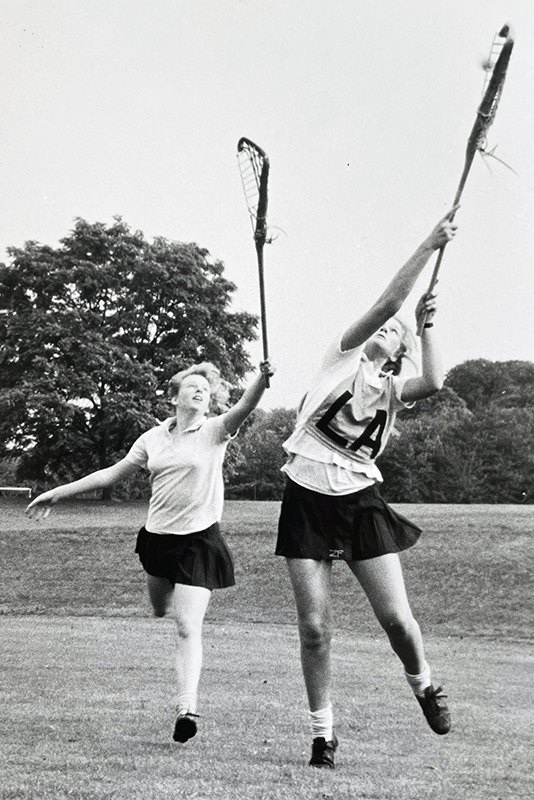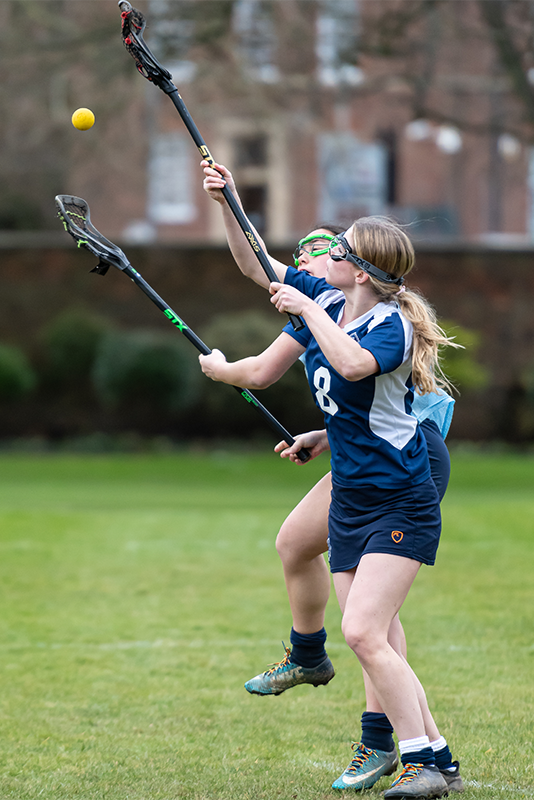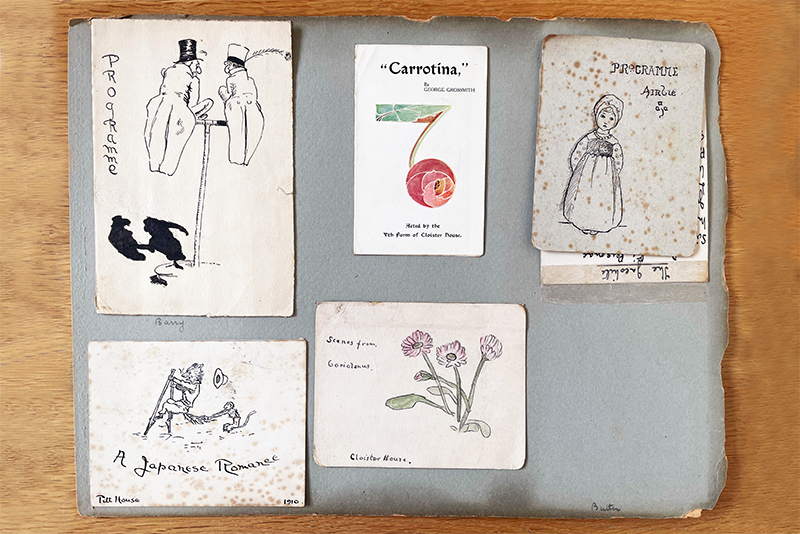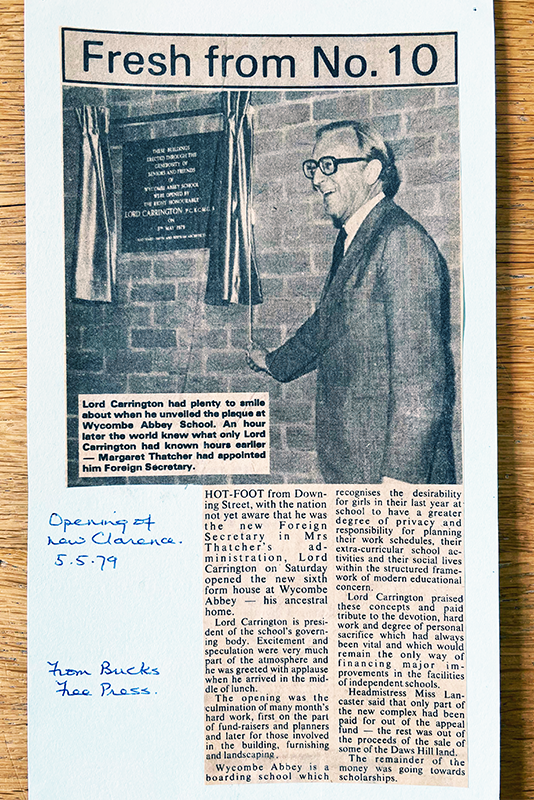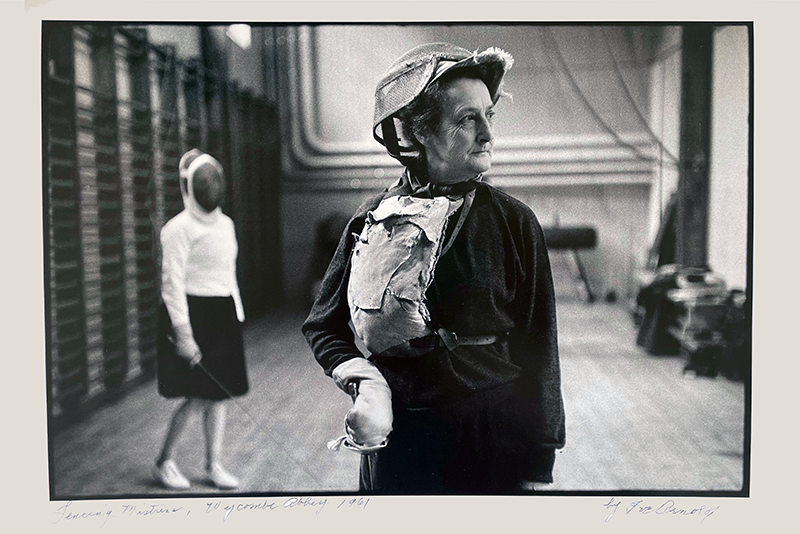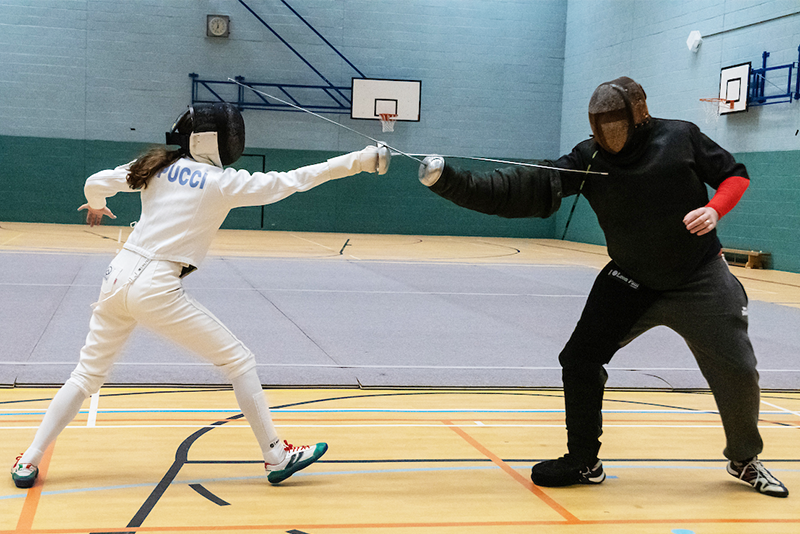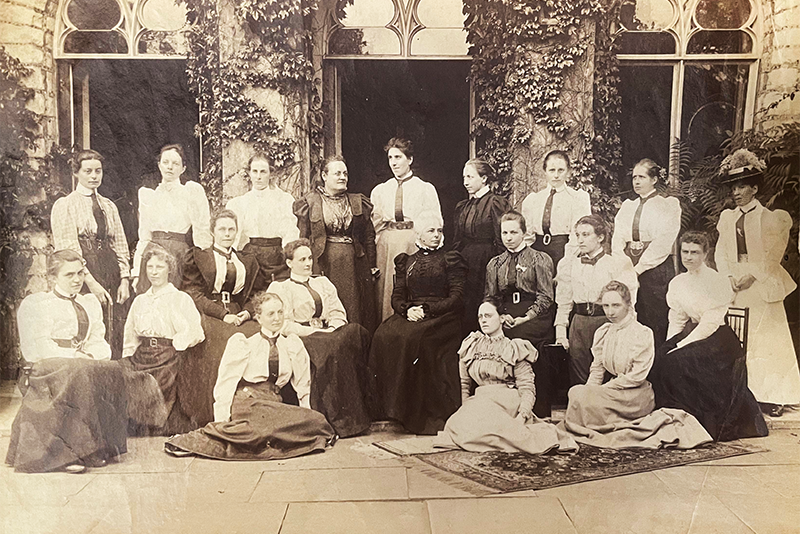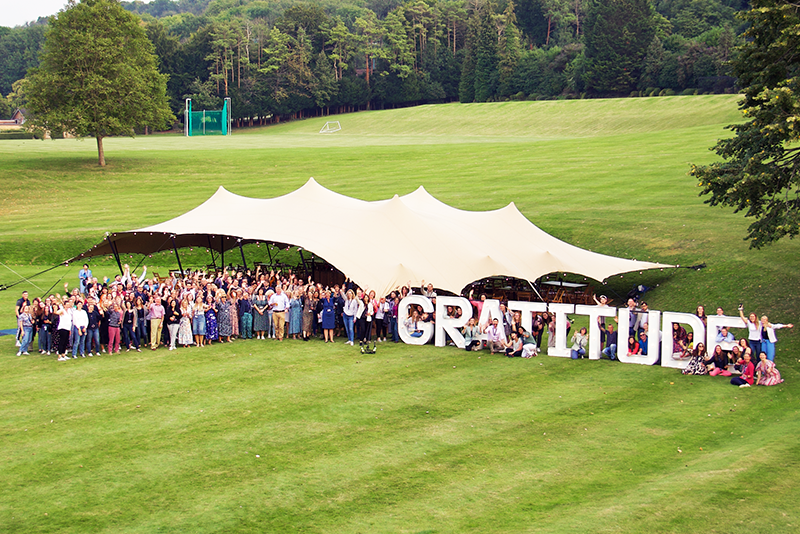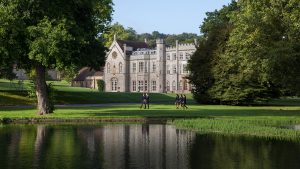

An illustrious history
and a bright future
The Headmistress
Jo Duncan is a graduate of the University of St Andrews where she read for a joint degree in English Literature and Theology. She grew up in Northern Ireland and attended a girls’ grammar school. She undertook her PGCE at Homerton College, University of Cambridge. Her first teaching post was as a teacher of Religious Studies at The Latymer School in North London – from there, she moved to Benenden School in Kent as Head of Department and Deputy Housemistress. She has held two previous Headships and was appointed Headmistress of Wycombe Abbey in September 2019.
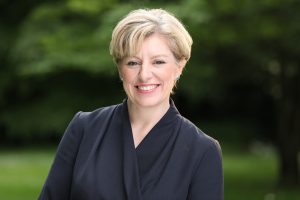

Headmistress' Welcome
Much of my career has been spent in schools founded by remarkable, forward-thinking women. I am passionate about girls’ education and the important role which girls’ schools play in enabling young women to reach their full potential.
Wycombe Abbey is an exceptional place; it operates as a modern full boarding school for 650 girls and we are committed to the development of each one. Built on the firm foundation of more than 125 years of educating young women, our vision is to provide a world class education. We are excited about encouraging curiosity, bold ideas, innovation, leadership and delight in learning – inside and outside the classroom.
Superb academic outcomes are the hallmark of a Wycombe Abbey education and girls regularly secure places at the most prestigious universities globally. However, we understand the importance of looking beyond the narrow confines of excellent examination results to define success. Our rich co-curricular programme includes an array of activities and opportunities, ensuring that every girl develops her passions and explores new possibilities. These experiences, in turn, help to build the skills, discipline and character that will support her future life.
Ultimately, schools are about people and at the heart of Wycombe Abbey’s success is our total commitment to pastoral care through boarding. The values of mutual respect, encouragement and trust underpin everything we do; in this happy and close-knit community everyone is known as an individual, friendships flourish and girls enjoy each other’s company, all within the wonderful surroundings of 170 acres of magnificent parkland.
I hope that girls who are educated at Wycombe Abbey, including my own daughter, will leave school as confident, articulate, independent young women who are able to navigate a competitive, global, technology-driven world successfully but who also have the qualities to make a positive difference through the lives they live. What are these qualities? I believe they are the ability to form meaningful relationships; to display good judgment; to demonstrate courage and integrity; to be emotionally resilient and to have a deep sense of respect for themselves and others.
It is my privilege to be Headmistress of this School and I warmly invite you and your daughter to come to see what makes Wycombe Abbey such a distinctive place for girls to learn and grow.
Mrs Jo Duncan
Click here for WYcombe Abbey 125 – Strategic Direction 2020 – 2025


A brief history
Heritage
Wycombe Abbey was founded on the day of Queen Victoria’s Diamond Jubilee, 23 September 1896, by Miss Frances Dove, later Dame Frances, a trailblazer who promoted equal opportunities for girls in the Victorian age. The School was established in Loakes Manor which had been redesigned by the celebrated architect James Wyatt for the first Lord Carrington in 1798.
The first cohort of girls in 1896 numbered only 40 but in just three years, the School was full with 210 pupils. The underlying principle of Dame Frances’ educational thinking was education for citizenship. She argued that women should be taught corporate virtues, and that to be good citizens it was essential to have wide interests and a sense of discipline, as well as an esprit de corps.
After Dame Frances’ retirement, Miss Whitelaw led the School through the difficult years of the First World War. She later pursued her plans for the construction of the Chapel; the foundation stone was laid in 1926.
The School continued to grow in strength through its early years. It hosted lectures on topical intellectual subjects and recitals by celebrated musicians. Girls increasingly won places at Oxford and Cambridge. In 1929, in the time of Miss Crosthwaite, the School purchased the old Carrington family home, Daws Hill, and its 200 acres of land.
All activity was suspended with the arrival of the Second World War. For the next four years Wycombe Abbey became ‘Pinetree’, home to the US Army Eighth Air Force and the largest telephone switchboard in England. ‘Pinetree’ welcomed a number of high profile guests at this time. King George VI, Queen Elizabeth, Winston Churchill and Glen Miller and his band all visited the Abbey.
In May 1946 Wycombe Abbey re-opened with 170 arrivals. Of these girls only six were former pupils. After the School received a thorough cleaning it enjoyed a truly ‘fresh start’.
Further expansion took place in the 1950s with the addition of the Walpole Wing and the furnishing of the Dove Library. In the 1960s and 1970s the School launched a number of building projects including the gymnasium, the art block and the front wall and gates, as well as a separate house for the UVI, Clarence House. Thanks to numerous generous donations in the 1980s, 1990s and 2000s, the Lancaster Arts Centre and Archer Recital Hall were built and The Davies Sports Centre opened in 2004. More recently, in 2017 the School opened an atrium café, named The Courtyard, and two new Boarding Houses for Pitt and Rubens.
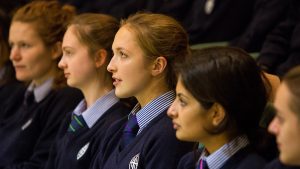

Experience and insight
Executive Leadership
The Executive Leadership Team works with the Headmistress in the implementation of the School’s vision. Its members have a detailed knowledge of the School and a wide range of experiences.
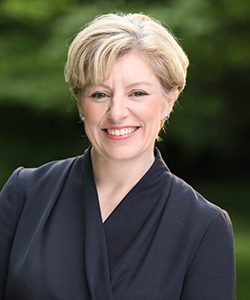
Jo Duncan
Headmistress
Staff Lists
Governing Council
The Governing Council works in partnership with the Headmistress to achieve the purpose and mission of the School. It is the Council’s responsibility to ensure continuity and plan for the future.
The Chair of Council can be contacted via post to Mr Peter Warren, Wycombe Abbey, Frances Dove Way, High Wycombe, Buckinghamshire, HP11 1PE or by emailing [email protected].
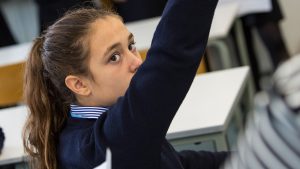

Strength and success
Our Vision
Wycombe Abbey is looking to the future with a clear vision which is to be at the forefront of girls’ boarding education and to be recognised globally as a world class school.
Our 2020 – 2025 Strategic Plan and 2023 Update can be found below.
Our Mission
To inspire every pupil to strive for ambitious goals and to recognise that they can make a positive difference in the world, now and in the future.
Our Aims
Wycombe Abbey’s aims were established by our founder, Dame Frances Dove, and remain the same today:
• the pursuit of academic excellence,
• the development of each individual’s talents in creative, physical and social skills, and
• the encouragement of faith in God and service to other people, all in a happy, fulfilling and caring community.
Our Values
Our values are the principles that guide the way we interact with other individuals and groups and are especially important in a boarding community like ours. These are the values that shape our school.
Trust – we foster strong relationships built on trust through good communication, willingness to listen and honesty.
Encouragement – we promote a positive atmosphere where all members of the community are supported to develop and fulfil their potential.
Mutual respect – we seek to understand and embrace differences in people, ideas and experiences with tolerance and understanding.
Dynamism – we are a forward-thinking school that nurtures the leaders of tomorrow for a global workplace.
Excellence – we believe in the importance of striving to be exceptional in whatever we do through the setting of ambitious goals and taking ownership of our decisions and actions.
Balance – we understand the importance of supporting staff and pupils to thrive by maintaining a healthy mind and body.
Innovation – we are excited about creating the future through being open-minded, curious and embracing change.
Service – we recognise the great rewards that individuals reap in helping, supporting and giving to others both within the school community and beyond it.
Our Ethos
Wycombe Abbey fosters a culture of excellence underpinned by a strong, supportive, and richly diverse boarding community. We deliver an exceptional experience for girls, enabling them to reach their full potential through the cultivation of academic and personal skills, talents and character. Trust, encouragement and mutual respect, values emphasised by our founder, Dame Frances Dove, are at the heart of our ethos and we promote a sense of belonging through the deeply embedded House system. We believe that Wycombe Abbey pupils will be the leaders of tomorrow who will shape the future through their lives of responsibility and service.
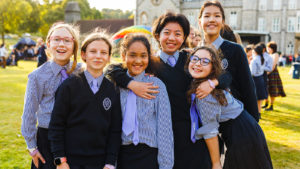

Maintaining Strong Foundations
Supporting Wycombe Abbey
Contributions from parents, alumnae and friends make a significant difference and through the generosity of our Wycombe Abbey community, we can continue to deliver an inspiring educational environment. Donations support bursaries, buildings and activities which enrich the experience of our pupils. Find out more about our current priorities and how to give by clicking the link below.
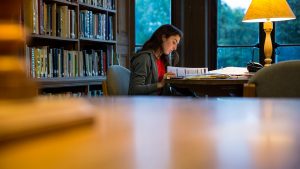

Challenging the status quo
Wycombe Women
Wycombe Abbey provides a world class education. The School’s alumnae push the boundaries within their chosen professions and are often at the top of their field.
Scroll through the timeline below to find out more about our notable alumnae. The date shown is when they left Wycombe Abbey to pursue their life path.
1899
Lady Winifred Frances PeckAuthor
Wrote more than 25 books in a career that spanned four decades.
1900
Ethel GabainPainter and Lithographer
War artist and founding member of the Senefelder Club (1909) with her husband John Copley and others.
1900
Joan Hodgson RivierePsychoanalyst
Founding member of the British Psychoanalytical Society (1913). An early translator of Freud and an influential writer in her own account.
1903
Mary Pickford CBEPolitician, Historian and Industrialist
Elected as a Member of Parliament (1931).
1905
Lady Jessie StreetReformer and Activist
Australian social reformer, recognised internationally for her activism in social justice and women’s rights.
1906
Elsie BowermanBarrister
Survived the sinking of the Titanic. Became the first Female Barrister at the Old Bailey (1924). Led the status-of-women section of the United Nations in New York (1947).
1906
Dorothy Lamb
An archaeologist and writer known for her catalogue of Greek terracotta figurines in the Acropolis Museum and her work in Mediterranean field archaeology.
1911
Florence NagleTrainer and Breeder of racehorses and pedigree dogs
Bred 21 UK champions, including Crufts ‘Best in Show’ (1960). Described as the ‘Mrs Pankhurst of British horse racing.’
1923
Antoinette PirieBiochemist
Biochemist and educator committed to the prevention of eye disease.
1924
Hester LeggattMI5 Secretary
Known to have played a key role in Operation Mincemeat during World War II.
1932
Mary Edith HideSportswoman
Played cricket for England in the first women’s test match (1934). Captained the team for 17 years, later becoming President of the Women’s Cricket Association (1973).
1935
Penelope FitzgeraldNovelist
Awarded the Booker Prize (1979) and The Golden PEN Award (1999) for a 'Lifetime’s Distinguished Service to Literature’.
1937
Freydis SharlandPilot
Joined the elite female pilots of the Air Transport Auxillary during World War II. Delivered 110 new Spitfires from factory to airfield.
1938
Florence TemkoAuthor and origami pioneer
An origami pioneer and one of the most prolific writers on the subject. She founded Origami USA in 1994.
1939
Lorraine CopelandArchaeologist
British archaeologist specialising in the Palaeolithic period of the Near East. A secret agent with the Special Operations Executive during World War II and an adviser to the Stone Age Institute. In 2004 the festschrift 'From the River to the Sea: The Palaeolithic and the Neolithic on the Euphrates and in the Northern Levant' was published in her honour.
1942
Jackie Forster (Moir Mackenzie)
Broadcaster, editor and gay rights activist. Became a television personality in the 1950s, appearing in programmes such as Highlight, Newsnight and Late Night Extra. Founded the organization Sappho and its magazine, which she edited for ten years (1971-81).
1950
Elizabeth Butler-Sloss GBEJudge
The first female Lord Justice of Appeal (1998). Appointed President of the Family Division of the High Court of Justice (1999), the first woman to hold the position. Independent Peer in the House of Lords.
1950
Baroness Elspeth Howe of IdlicoteBritish life peer and crossbench member of the House of Lords
Baroness Howe of Idlicote served as Deputy Chairman of the Equal Opportunities Commission from 1975 to 1979. She was later made Chair of the Broadcasting Standards Commission. Awarded a CBE in 1999. Justice of the Peace in Inner London from 1964 until her retirement from the Bench in 2002.
1957
Judith Chaplain OBECivil Servant and politician
Head of Policy Unit, Institute of Directors 1986-88; Special Adviser to Chancellor of Exchequer 1988-1990; Head Prime Minister's Political Office 1990-1992; MP (Conservative) for Newbury 1992-1993. Awarded an OBE in 1992.
1957
Fiona MacCarthyBiographer and historian
British biographer and cultural historian best known for her studies of 19th- and 20th-century art and design.
1960
Katy Haber MBEInternational Community Activist
Founding member of BAFTA Los Angeles (1987) after a successful career in the British Film Industry. International Community Activist. Founded the Compton Cricket Club (1995) with homeless activist Ted Hayes in one of LA’s most notorious neighbourhoods. Awarded an MBE for services to her community (2012).
1962
Delphine Gray-FiskPilot
One of Britain’s first female airline pilots, flew commercial jets for Dan-Air.
1963
Dr Kathy WilkesPhilosopher and Academic
Involved in rebuilding the education systems of former Communist countries after 1990. Awarded the commemorative medal of the President of the Czech Republic (1998).
1967
Dame Elizabeth Slade DBEJudge
Lady Margaret Hall, Oxford 1968-71. Called to the bar at Inner Temple in 1972, Bencher 1990. Took Silk in 1992, recorder and deputy judge of the High Court from 1998 to 2008 and judge of the High Court of Justice (Queen's Bench Division) since 2008. Author of Tolley’s Employment Handbook. Member of the Administrative Tribunal Bank for International Settlements 2000-2008 and European Bank of Reconstruction and Development (EBRD) 2008.
1968
Dame Rosalind Savill DBECurator and Ceramicist
Director of the Wallace Collection then Curator at the V&A. Awarded a CBE for services to the study of ceramics (2000). Named as Dame Commander of the Order of the British Empire (2009).
1970
Stella KenrickPrivate Detective
Managed the Oxford Detective Bureau (2002-2012). Voted ‘Investigator of the Year’ (2011).
1971
Caroline BanszkyBusinesswoman
CEO of The Law Debenture Corporation (2002).
1973
Dame Beverley LangJudge
Called to the Bar at Inner Temple in 1978 and worked as a lecturer at the University of East Anglia from 1978 to 1981. Appointed a Queen's Counsel in 2000, Recorder from 2006 to 2011, and judge of the High Court of Justice (Queen's Bench Division) since 2011.
1974
Dame Sarah Springman DBE FREngEngineer and Sportswoman
Competed in the 1990 Commonwealth Games Triathlon. Awarded the OBE (1997) and the CBE for service to Triathlon (2012). Awarded Lifetime Achievement Award at the Sunday Times and Sky Sportswoman of the Year Awards (2013).
1978
Her Honour Judge Juliet Mary May QCJudge
Justice of the High Court since 2015. She was called to the Bar in 1988 and took Silk in 2008, being appointed as a Circuit Judge later that year.
1981
Rosie AlisonFilm Producer and Author
Credits include Testament of Youth, Paddington and The Boy in the Striped Pyjamas. Winner of the 'Orange Prize for Fiction' (2010) for novel The Very Thought of You.
1981
Jo HilditchEntrepreneur
Founder of White Heron Drinks – producer of an award-winning range of British Cassis – and manager of large agribusiness.
1982
Dame Sue CarrJudge
First Lady Chief Justice of England and Wales. Previously served as a High Court judge from 2013 to 2020 and a Lady Justice of Appeal from 2020 to 2023.
1982
Clare Pillman CBCivil Servant
Director at Department for Culture, Media and Sport (2011).
1983
Wendy Outhwaite QCWine Producer and former Barrister
Founder of Ambriel Sparkling Wine (2013).
1985
Professor Gemma CalvertNeuroscientist
Founder of Neurosense Limited (1999), the world’s first neuromarketing agency. She is a Visiting Professor at the Nanyang Business School and Fellow of the Institute for Asian Consumer Insight at the Nanyang Technological University in Singapore.
1986
Kate BrookeScreenwriter
Screenwriter who has worked on Mr. Selfridge, Case Sensitive, The Making of a Lady, The Ice Cream Girls, The Forsyte Saga and more recently A Discovery of Witches.
1986
Charlotte MooreTelevision Producer
Director of Content for the BBC.
1988
Sally PhilipsActor
Best known for her role as Tilly in the BBC comedy Miranda. Starred in the Bridget Jones’s Diary films. Plays the title role in the BBC Radio 4 comedy show Clare in the Community.
1988
Merryn Somerset WebbEditor
Editor in Chief of the popular personal finance magazine, MoneyWeek, writes for the Financial Times, The Sunday Post and Saga Magazine.
1989
Emily (Eve) BestActor
An actress and director known for television roles such as Dr. Eleanor O'Hara in Nurse Jackie (2009–2013), Wallis Simpson in the 2010 film The King's Speech, Monica Chatwin in The Honourable Woman (2014) and Princess Rhaenys Targaryen in House of the Dragon. Won the 2006 Olivier Award for Best Actress for playing the title role in Hedda Gabler.
1992
Sonya WalgerActor
Actress who had roles in The Mind of the Married Man (2001–2002), Coupling (2003) and as Penny Widmore in Lost (2006–2010). Later shows include Tell Me You Love Me (2007), FlashForward (2009–2010), Common Law (2012), The Catch (2016–2017) and For All Mankind (2019–2022).
1993
Tabitha Somerset-WebbFashion Designer
Launched the clothing line, ‘Project D’ (2010) with Dannii Minogue and launched her own brand, ‘Tabitha Webb’, in 2003.
1993
Francesca ZinoAthlete
Represented Team GB in the rowing squad at the 2000 Olympics in Sydney.
1994
Naomi FrederickActor
Selected theatre work includes Mrs Affleck at the National Theatre, As You Like It and The Heresy of Love at Shakespeare’s Globe and The Winslow Boy at the Old Vic Theatre.
1995
Francesca DonnerJournalist
Editor of The Wall Street Journal (2011). Director at The New York Times (2015).
1995
Diana MagnayJournalist
A journalist who is Sky News' Moscow correspondent, previously reported for CNN and worked freelance for Channel 4 News in their foreign affairs unit while completing a Masters in War Studies at King's College London, for which she won the Director's Prize for International Peace and Security.
1995
Rachel StirlingActor
Stage, film and television actress who has been nominated twice for the Laurence Olivier Award for her stage work. Played Nancy Astley in Tipping the Velvet, and Millie in The Bletchley Circle. Also guest starred in Lewis and Doctor Who.
1996
Georgie FienbergFounder and Director
Established AfriKids, which won the Charity Times International Charity of the Year (2015).
1996
Angharad FitzwilliamsHedge Fund Director
Head of Hedge Fund Capital Group, Asia, at Deutsche Bank.
1996
Clarissa WardJournalist
CNN Senior International Correspondent. Covered the early days of the Syrian Civil War, receiving the Peabody and DuPont Awards (1998). Also received two Emmy awards and honours from the Radio and Television Correspondents’ Association.
1997
Professor Angelica RonaldResearcher
Director of the Genes Environment Lifespan Laboratory (GEL) and a Professor at the Department of Psychological Sciences at Birkbeck University. Awarded the Thompson Award (2005) and the prestigious Spearman Medal (2012).
2000
Roxane HeatonEngineer
Head of Technology-Innovation, Morrisons. Won FDM Everywoman in Technology Awards (2015). Nominated for driving business change throughout training and operational systems in the Royal Navy.
2002
Polly StenhamPlaywright
English playwright known for her play That Face, which she wrote when she was 19 years old.
2006
Nikki EmersonAthlete
Qualified as a wheelchair racer in the 2012 Paralympics and works in the Commercial Team for a Premier League Football Team.
2008
Natalie SimpsonActor
Appeared in King Lear, Cymbeline and Hamlet with the Royal Shakespeare Company. Won a BroadwayWorld UK Award for Best Supporting Actress as Ophelia (2016).
2012
Scarlett KollerAstronautics Engineer
Worked on the Mars 2020 Rover Mission as Systems Testbed Engineer within the Jet Propulsion Laboratory at NASA.
2017
Soma SaraActivist
Soma founded the platform ‘Everyone’s Invited’ (2020), a viral social media movement and website to support survivors of sexual abuse and was named one of BBC’s top 100 most inspiring and influential women (2021).
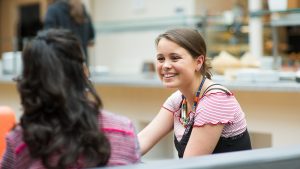
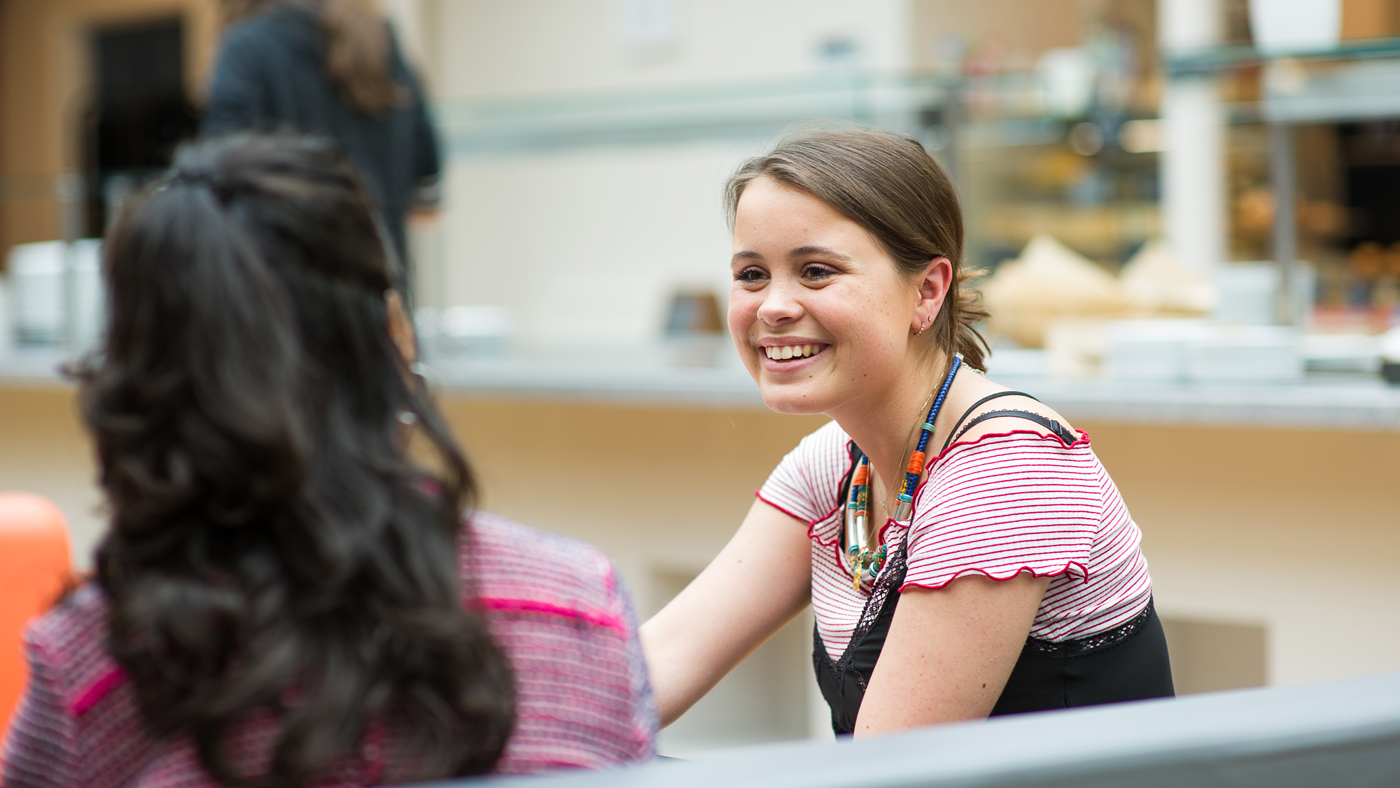
Partnerships
Partnerships are an area of strategic priority for Wycombe Abbey and our work in this area has greatly moved forward in recent years. We have established strong links with ten local primary schools. The entire Sixth Form spend four half-terms working in these schools each academic year, totalling some 2,000 hours of support. What our own pupils gain from this service is significant: engagement with our local community and working with young children, in many cases from deprived backgrounds, is often a transformative experience.
Our relationships with eight state schools across London, Oxfordshire and Hertfordshire continue to blossom. Having supported their applicants to highly selective universities for two cycles, we have refined our approach and delivery to include the professional development of their teachers in this area, while simultaneously boosting our resourcing of this project. We now have four members of staff each allocated for one whole day per week, so that they may regularly visit our partners and support their work. By way of mutual benefit, we are grateful to engage in extremely valuable professional development opportunities, including coaching courses and accreditation, as well as membership of formalised professional learning communities that meet on a half-termly basis.
We are grateful to have recently received a £50,000 donation to support a project bringing our university preparation curriculum online, so that we may more efficiently share it on a wide scale. This ambitious project aims to reach over 300 gifted and talented pupils in its first year.
Our longstanding partnership with Cressex Community School has two key elements. Supporting their Literacy Mentoring Scheme, where a number of our senior pupils go to Cressex weekly to help younger pupils with reading. The Cressex Summer School runs for three days in the Summer Term and sees a number of Cressex pupils hosted at Wycombe Abbey for enrichment activities led by our staff.
LEARN MORE ABOUT OUR PARTNERSHIP ACTIVITY ON THE SCHOOLS TOGETHER WEBSITE
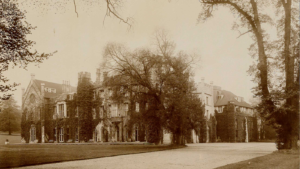

Treasures from the Archive
Wycombe Abbey in 12 Objects
We are delighted to share with you treasured items from our archive collection that we hope will bring Wycombe Abbey’s past to life and take you on a journey over the last 125 years.
Click the images below to read the story behind them.
If you have any Wycombe Abbey memorabilia that you would like to donate to the School, please contact us by emailing [email protected]. We love receiving archive pieces and hearing the stories of the many people who have moved through Wycombe Abbey over the years.
